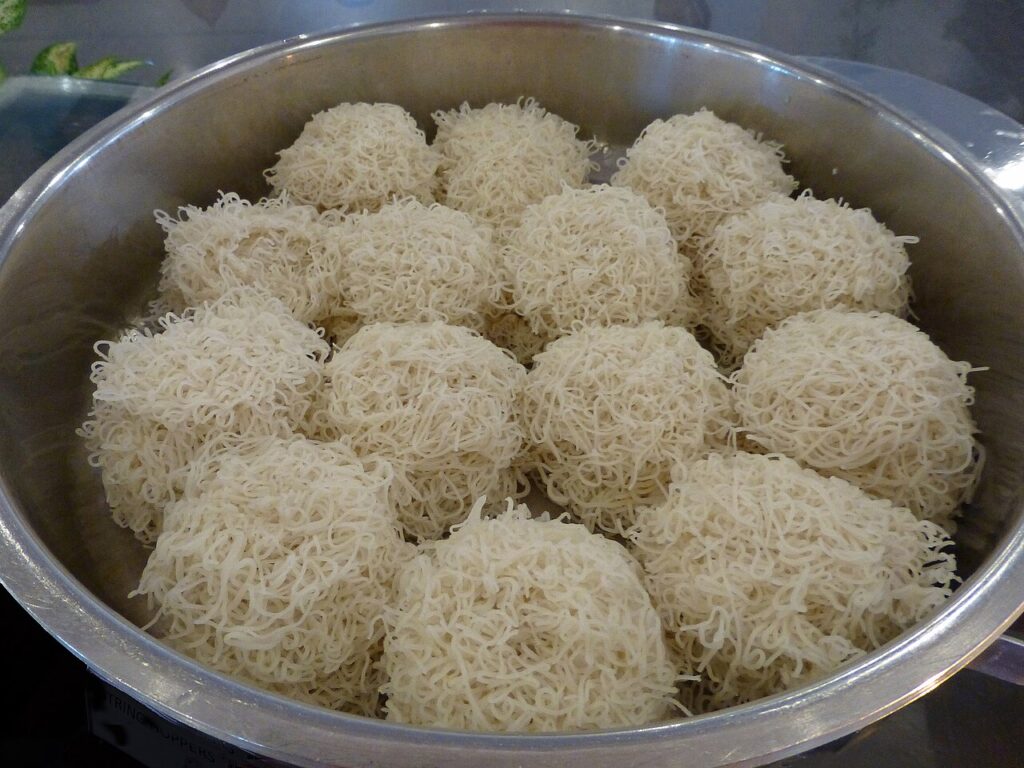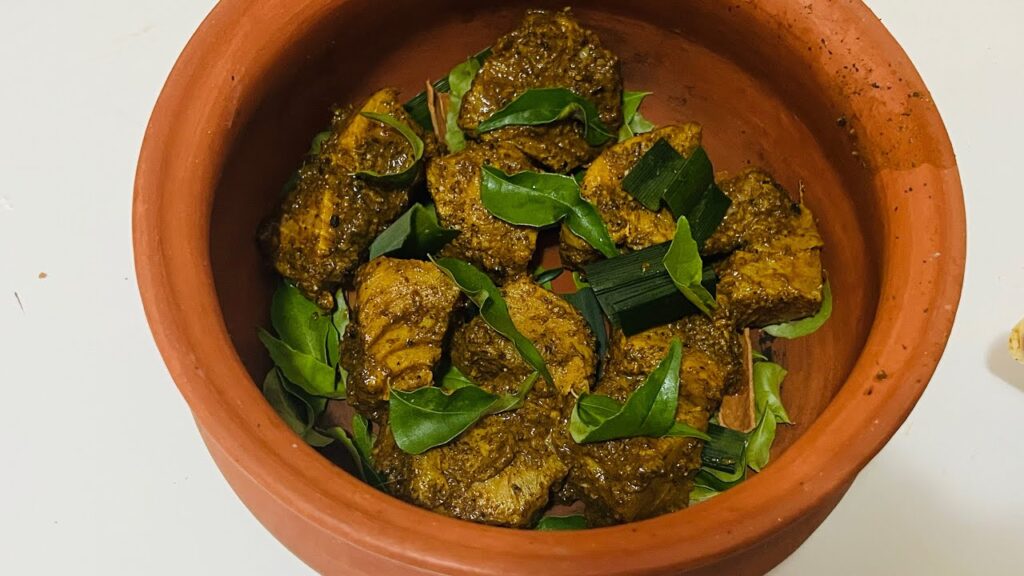Sri Lankan Cuisine To Be Discovered
Introduction
Sri Lanka is a country known worldwide not only for its natural beauty, but also for its amazing cuisine. The island’s food is characterized by rich spices, fresh seafood and exotic fruits. Sri Lankan cuisine has been influenced by different cultures throughout history and has developed a unique flavor profile. Indian and Middle Eastern influences can be felt in its traditional desserts, combined with Dutch and Portuguese influences in its savory dishes. Here are the flavors unique to Sri Lanka;
Rice and Curry:
Rice and curry is one of the traditional and popular dishes of Sri Lanka. It is consists of a variety of curried meat, fish or vegetable dishes, usually served with white rice. Enriched with local spices, the curry is prepared with coconut milk, black pepper, coriander and other spices. In addition, Rice and Curry is often served with a spicy side dish called sambol. These side dishes are made from ingredients such as coconut, onions, green chilies, lime and roasted dried shrimp. Rice and curry are at the heart of Sri Lankan cuisine and are often found in local restaurants and homes.

Hopper:
 Hopper is Sri Lanka’s traditional breakfast. It is bought from street vendors or restaurants early in the day. Hopper is made from a thin dough with fermented rice flour, coconut milk and coconut water. When cooking in a pan, an egg is cracked into the center and the dough is cooked until the edges are crispy. Hopper is usually served with sambol and acharu (pickles). However, sweet versions are sometimes made and served with coconut milk or jaggery (palm sugar).
Hopper is Sri Lanka’s traditional breakfast. It is bought from street vendors or restaurants early in the day. Hopper is made from a thin dough with fermented rice flour, coconut milk and coconut water. When cooking in a pan, an egg is cracked into the center and the dough is cooked until the edges are crispy. Hopper is usually served with sambol and acharu (pickles). However, sweet versions are sometimes made and served with coconut milk or jaggery (palm sugar).
Kottu Roti:
It is Sri Lanka’s most popular street food. It is usually preferred for lunch or dinner. Kottu Roti is prepared with chopped bread (roti), vegetables, meat (usually chicken, beef or seafood) and a range of spices. While roasting in the pan, chefs finely chop and mix the ingredients with a special knife. Kottu roti is a hearty dish full of different flavors. It is served with additional flavors such as lemon juice or hot sauce.
Lamprais:
Lamprais is a Sri Lankan dish of Dutch origin, named after the Dutch word “lump rice”, which means lumpy rice. The dish is cooked in a packet made of rice, meat (usually beef), potatoes, eggs, special spices and coconut milk. These packets are then cooked in the oven or over steam. Lamprais are often served on special occasions in Sri Lanka or at special events. This dish offers a rich taste experience with a combination of different flavors and reflects the diversity of Sri Lankan cuisine.
Kiribath:
Kiribath is known as Sri Lanka’s traditional festive dish and is usually served on special occasions or festival times. The name means “milk rice” and this dish is made from white rice and coconut milk. The rice is boiled together with the milk and then spread and cut into a thick layer. It is usually served with dates or honey and has a sweet flavor.
Wambatu Moju:
Wambatu moju is Sri Lanka’s traditional pickled dish and is a pickled hail of eggplant. The eggplants are first fried and then pickled in a special mixture. This mixture can include onions, green chilies, dried red chilies, mustard seeds, chili peppers, sugar, vinegar and other spices. Wambatu moju is served with main dishes or as a snack.
Kokis:
Kokis is one of Sri Lanka’s traditional sweet snacks and is especially popular around Easter. This crunchy snack is made from a dough made with rice flour, coconut milk and coconut water. This dough is then shaped using a special mold and fried in hot oil. The result is a golden, crispy and delicious snack.
Gotu Kola Sambol:
Gotu kola sambol is a popular Sri Lankan side dish and is often served alongside other dishes. It is prepared by mixing gotu kola (Indian mushroom) leaves with grated coconut, onion, green chilies, lemon juice, coconut vinegar and salt. This sambol has a fresh and mild flavor and is perfect as a side dish to accompany meals.
Ambul Thiyal:
 Ambul Thiyal is a famous Sri Lankan fish dish, usually served dry. This dish is usually made with tuna or other firm-fleshed fish. The fish is marinated in coconut vinegar, black pepper, lime and other spices before being fried. This mixture is then fried in hot oil and cooked until tender. Ambul Thiyal has a sour and spicy flavor and is usually served with white rice.
Ambul Thiyal is a famous Sri Lankan fish dish, usually served dry. This dish is usually made with tuna or other firm-fleshed fish. The fish is marinated in coconut vinegar, black pepper, lime and other spices before being fried. This mixture is then fried in hot oil and cooked until tender. Ambul Thiyal has a sour and spicy flavor and is usually served with white rice.
Pol Sambol
Pol Sambol is a traditional Sri Lankan side dish and side dish. This dish consists of a mixture made with grated coconut, onion, red onion, dried red chili, lemon juice and salt. All ingredients are combined and mixed well. Pol Sambol is usually served for breakfast or with main courses and is considered a typical delicacy of Sri Lankan cuisine. This dish combines bitter, sour and salty flavors, as well as coconut flavor.
These two dishes are inspired by Sri Lanka’s rich seafood and local ingredients such as coconut and represent the country’s delicious and diverse cuisine.
Kiri Peni:
Kiri Peni is a popular dessert in Sri Lanka. “Kiri” means milk and “Peni” means sugar. This dessert consists of a simple but delicious recipe that is basically made by boiling milk and sugar. The milk and sugar mixture is slowly cooked until it reaches a thick and thick consistency. This caramel-like mixture is then poured into small molds and cooled. The result is a dense dessert with a dark and sweet caramel flavor. Kiri Peni is a traditional dessert often served on special occasions and festival celebrations in Sri Lanka.
Watalappam:
Watalappam is a traditional dessert of Sri Lanka and is often served on special occasions or festival times. This dessert is made with coconut milk, jaggery (palm sugar), eggs and spices. Watalappam is especially flavored with castor cinnamon, cloves and vanilla. It is prepared by mixing the ingredients thoroughly and then cooking over steam or in the oven. The result is a sweet and spicy flavor with a dense consistency. Watalappam is considered part of Sri Lanka’s cultural heritage and is often served at special events and family gatherings.










